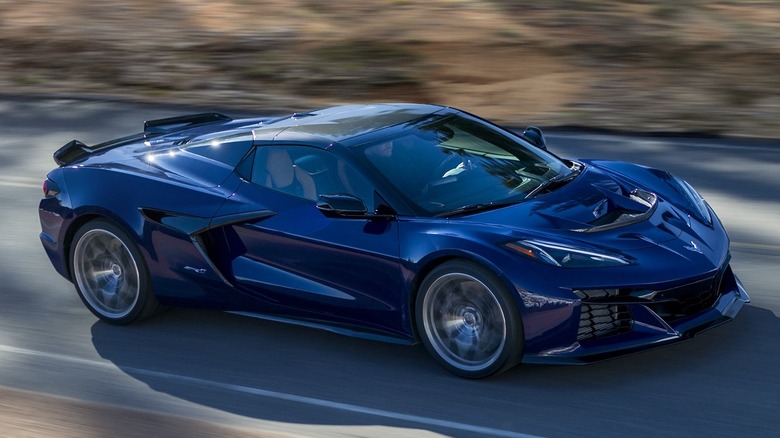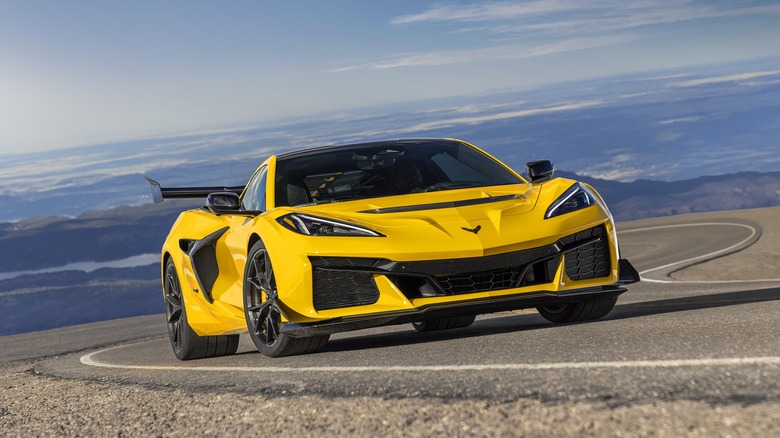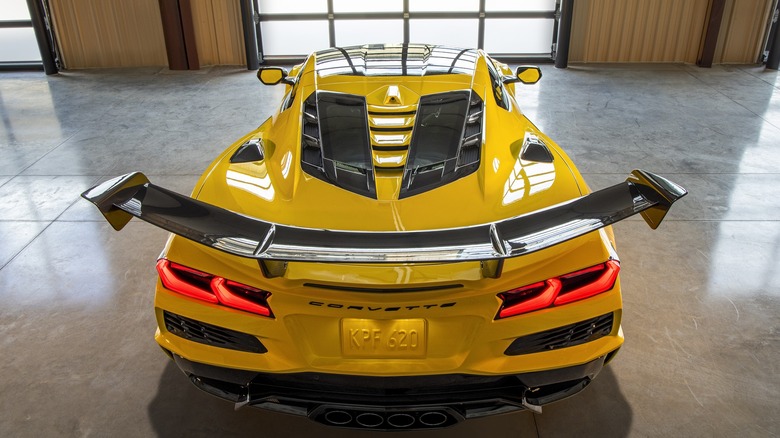2025 Chevrolet Corvette ZR1 Supercar-Killer Pairs 1,064 Hp And Split Window Style
When GM-owned Chevrolet announced the seventh generation Corvette ZR1 in 2017, it featured one of the biggest engine upgrades for that model. The (then) new LT5 V8 engine generated 755 hp of power and produced 715 lb-ft of torque. These numbers ensured that the car was significantly more powerful than its predecessor — the "Blue Devil" C6 Corvette ZR1 from 2009 — which featured a 6.2 liter, 635 hp V8 engine.
Going further back in time, we had the Corvette C4 ZR1 models from the early '90s that featured 5.7-liter DOHC V-8 engines that produced 375 hp before they were re-tuned to make 405 hp.
Simply put, Chevrolet has been adding oodles of power to each successive generation of the Corvette ZR1 models. Chevrolet seems to be doing something similar with its brand new, 8th-generation models of the Corvette ZR1. For the newest edition of the much-rumored 2025 Chevrolet Corvette ZR1, the company has upped the performance numbers even higher.
The 2025 Chevrolet Corvette ZR1 — which is the first-ever model of the eight-generation Corvette lineup — has several superlatives to its credit. Its brand-new LT7 engine has earned the distinction of becoming the most powerful V8 ever produced in America by an automaker. The upped power figures also make the 2025 Corvette ZR1 the most powerful factory-built Corvette ever.
2025 Chevrolet Corvette ZR1: It's all about the new LT7 engine
The main talking point of the 2025 Chevrolet Corvette ZR1 will, without doubt, be the brand new 5.5L, twin-turbocharged DOHC flat-plane crank V8 engine dubbed the LT7. Power figures generated by this engine — for the first time on a production Corvette — breach the 1000 hp mark. The LT7 engine on the 2025 Corvette ZR1 produces 1064 hp of power at 7000 rpm, while the torque figures go up to 828 lb-ft at 6000 rpm. GM claims a top speed of over 215 mph for the car.
For those wondering, the LT7 engine uses the same architecture as the LT6 engine on the Corvette Z06, but adds twin turbochargers to the mix, also making this Corvette the first to feature such a setup from the factory. The additional power generated by the LT7 engine also meant that Chevrolet had to change the car's transmission setup. Aside from the inner and outer shafts being upgraded, the company made several final drive refinements. Gear capacity was also increased via shot peening for all gears.
Like before, Chevrolet also lets buyers purchase an optional ZTK performance package which makes the car even more potent on racetracks. Apart from a high-downforce rear wing and front dive planes, this package also adds a tall hood Gurney lip constructed from woven carbon fiber, as well as stiffer suspension strings and Michelin Pilot Sport Cup 2 R tires.
The return of the iconic split window
One of the most iconic styling elements of the Corvettes of the yore was the instantly recognizable split window design for the rear glass panel. Chevrolet silently withdrew this design element, which was last seen on the C2-generation Corvette back in the 1960s. This iconic design element is back in the ZR1, but not just as mere eye candy. On the ZR1, the center spine of the split window doubles up as a functional element as well, enabling increased heat extraction from the engine compartment.
Besides this obvious design change, the 2025 Chevrolet Corvette ZR1 also gets a lighter, carbon fiber roof on both the coupe and convertible models. The company also offers four finishes for the aluminum wheel design. This includes the original Edge Blue color, which is the ZR1's signature color cue. There is also an optional carbon-fiber wheel option, which helps in lowering the weight of the car even further.
Chevrolet has confirmed that the 2025 Corvette ZR1 will be made available for purchase in 2025. The car will be made completely in the U.S. at General Motors' Bowling Green Assembly Plant in Kentucky. The company has yet to share pricing details, but being the flagship product in the Corvette lineup, do expect to pay a significant premium over the company's existing lineup of cars.


